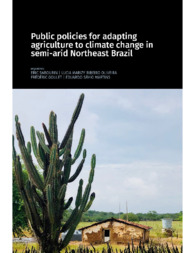Sustainable agriculture as an adaptation measure for Araripe Plaster Pole.
Sustainable agriculture as an adaptation measure for Araripe Plaster Pole.
Author(s): ANGELOTTI, F.; OLIVEIRA, A. R. de; GIONGO, V.; BARROS, J. R. A.; GUIMARÃES, M. J. M.
Summary: The Araripe Plaster Pole, located in the Brazilian semi-arid region, is responsible for producing 97% of the gypsum consumed in Brazil, which is considered the best quality gypsum worldwide given its high purity (Barbosa et al., 2014). However, the energy matrix of the factories involved in the gypsum production process in the Araripe region is characterized by firewood use from the Caatinga, most often the result of illegal deforestation. Moreover, monoculture systems, commonly practiced by traditional agriculture in the region, are characterized by predatory extraction of natural resources of soil and vegetation and the consequent oversimplification of the food web, losing the resilience or environmental plasticity of the ecosystem.
Publication year: 2022
Types of publication: Book sections
Unit: Embrapa Semi-arid Region
Observation
Some of Embrapa's publications are published as ePub files. To read them, use or download one of the following free software options to your computer or mobile device. Android: Google Play Books; IOS: iBooks; Windows and Linux: Calibre.
Access other publications
Access the Agricultural Research Database (BDPA) to consult Embrapa's full library collection and records.
Visit Embrapa Bookstore to purchase books and other publications sold by Embrapa.

